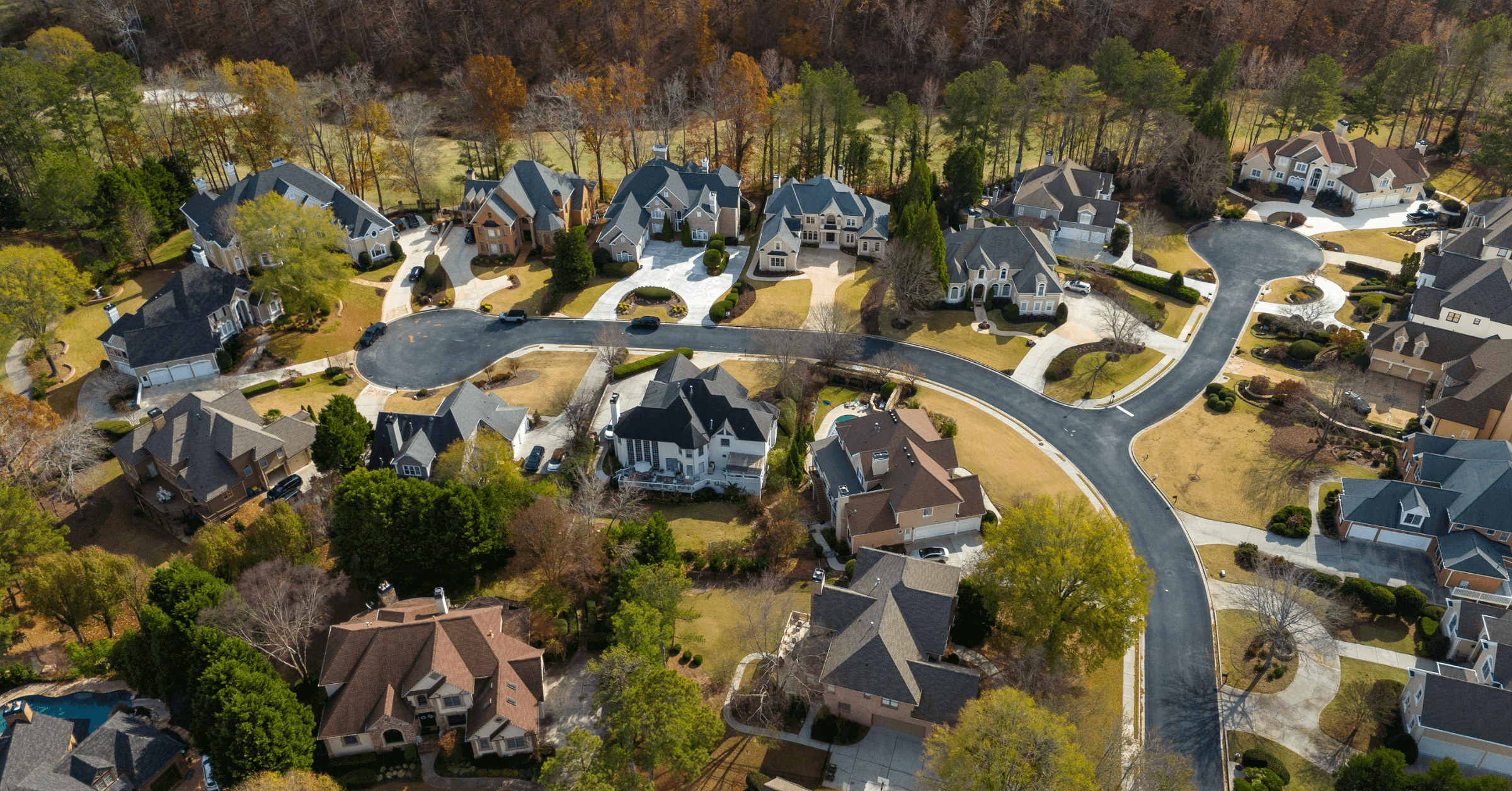Understanding Subdivisions: Unlocking Land Ownership and Development Opportunities

What Is a Subdivision in Real Estate?
A subdivision in real estate refers to the process of dividing a larger tract, parcel, or lot of land into two or more smaller, individually owned plots. Each resulting parcel can be sold, leased, or developed separately. This division is typically carried out by landowners, developers, or real estate investors seeking to maximize the land’s value, increase its utility, and meet zoning or community needs [1] [2] . Subdivisions are common in both urban and rural settings and may be intended for residential, commercial, or industrial purposes [5] .
Types of Subdivisions
Subdivisions can take several forms depending on legal definitions and local regulations:
- Standard Subdivision: Individual ownership of each lot, with optional homeowner association (HOA) or community rules. No shared ownership except for possible easements [4] .
- Common Interest Development (CID): Owners have exclusive rights to their unit or lot and shared rights in common areas, such as parks or pools. This includes planned developments and condominiums [4] .
- Commercial or Industrial Subdivisions: Land is divided for business, retail, or manufacturing purposes, often creating business parks or shopping centers [5] .
How Does the Subdivision Process Work?
The subdivision process is highly regulated and involves several steps, often governed by local or state statutes. The process generally includes:
- Feasibility Assessment: Evaluating whether the land can be subdivided under applicable zoning laws, considering factors like minimum lot size, access, and infrastructure [1] .
- Land Survey: A licensed surveyor maps out the proposed divisions to ensure accuracy and compliance with legal requirements [3] .
- Zoning and Permit Applications: Applications are submitted to the local planning department or zoning board. This step may require public hearings or community input [2] .
- Subdivision Approval: The local authority reviews the proposal for compliance with regulations regarding land use, environmental impact, and public infrastructure. Approval may be conditional on making certain improvements, such as roads or utilities [1] .
- Plat Recording: Once approved, the subdivision plat is recorded with the county or municipal land records office [3] .
- Development and Sale: The subdivided lots may then be developed (e.g., homes built) or sold to individual buyers or investors [1] .
Each of these steps may vary based on location, property size, intended use, and regulatory environment.
Real-World Example: Residential Subdivisions
A common scenario is a landowner or developer purchasing a large parcel on the outskirts of a city. After conducting a feasibility study, they propose dividing the land into 30 residential lots. The developer works with surveyors, submits a subdivision plan, addresses zoning requirements (such as minimum lot size), and attends planning board meetings. Upon approval, the developer builds roads, installs utilities, and markets the lots to homebuyers. In many cases, homes within a subdivision are built with similar designs, creating cohesive neighborhoods with shared amenities [1] .
Benefits of Subdividing Land
Subdivisions offer several potential benefits for both landowners and communities:
- Increased Land Value: Dividing land into multiple parcels can increase overall market value, since smaller lots are often more attractive and affordable to a wider range of buyers [1] .
- Income Opportunities: Landowners and developers can generate new revenue streams by selling or leasing individual lots [1] .
- Community Growth: Subdivisions can address housing shortages and encourage community development by making more homes or business spaces available [5] .
- Infrastructure Improvements: Many subdivisions require the construction of roads, utilities, and parks, benefiting current and future residents.
Potential Challenges and Solutions
While subdivisions can be lucrative, they often involve complex legal, financial, and logistical challenges:
- Zoning Restrictions: Local zoning laws may limit the number of lots or dictate minimum lot sizes. It is essential to consult with your municipality’s planning department before proceeding. Search for your city or county’s “planning and zoning department” for guidance.
- Permitting and Approvals: The approval process can be time-consuming and may require public hearings. Engage early with planning officials and consider hiring a real estate attorney or consultant experienced in subdivisions.
- Infrastructure Costs: Subdivision may require significant investment in roads, utilities, and stormwater management. Costs typically fall to the developer and may affect project feasibility.
- Market Demand: Not all subdivided lots sell quickly. Conduct thorough market research to assess demand for your planned lots or units.
- Legal Complexities: Ownership issues, easements, and title concerns can arise. Work with a qualified real estate attorney to ensure clear title and compliance with all regulations.
In many cases, developers mitigate these challenges by partnering with local authorities, involving community stakeholders, and working with experienced professionals throughout the process.

Source: crestrealestate.com
Step-by-Step Guide: How to Subdivide Land
If you are considering subdividing your property, follow these general steps for the best chance of success:
- Research Local Regulations: Contact your local planning or zoning department. Ask about minimum lot sizes, required infrastructure, and application fees. Some municipalities provide online guides or checklists.
- Hire Professionals: Engage a licensed land surveyor and, if necessary, a civil engineer or real estate attorney specializing in land use.
- Prepare a Subdivision Plan: Develop detailed maps showing proposed lot boundaries, roadways, and utility placements. Ensure your plan meets all local requirements.
- Submit Your Application: File your plan with the local planning board or equivalent authority. Attend required public hearings and be prepared to address questions or concerns.
- Address Conditions: Authorities may approve your subdivision with conditions, such as sidewalk installation or environmental mitigation. Complete these as required.
- Record the Plat: Once all conditions are met, record the approved subdivision map with your county or municipality’s land records office.
- Market and Sell Lots: If your goal is to sell, begin marketing the lots to builders, investors, or homebuyers. Consider working with a real estate brokerage experienced in land sales.
Since local rules and procedures vary, it is critical to start with a call or visit to your local planning department, or search for “subdivision application process” along with your city or county name.
Alternative Approaches and Key Considerations
Alternative land development strategies may include:
- Joint Ventures: Collaborating with other landowners or developers to share costs and risks.
- Land Assemblage: Combining multiple parcels to create a larger subdivision project.
- Minor vs. Major Subdivision: Some areas distinguish between minor (few lots, less impact) and major (many lots, new roads/utilities) subdivisions, each with unique approval criteria [3] .
Be aware that subdivisions involving new streets, infrastructure, or public amenities will generally require more complex approvals and higher upfront investment. Research the specific requirements in your jurisdiction, and consider consulting with the local real estate board or professional associations for best practices.

Source: getasiteplan.com
How to Access Subdivision Services and Resources
To begin the subdivision process or learn more about local requirements:
- Search for your city or county’s “planning and zoning department” or “land use division.” Many have official websites with application packets, checklists, and contact information.
- Consult with a licensed real estate agent, surveyor, or land use attorney who is familiar with subdivisions in your area.
- Contact the state agency responsible for real estate regulation. For example, in California, you can refer to the California Department of Real Estate for consumer guides and regulatory information [4] .
- If you are interested in purchasing property within a subdivision, ask your agent for a copy of the subdivision map, CC&Rs (Covenants, Conditions, and Restrictions), and HOA documents, if applicable.
As each location has its own process, requirements, and forms, always begin by contacting your local planning department or searching for official guidance through your municipality’s website. If you are uncertain about next steps, consider reaching out to your local real estate board or association for referrals to qualified professionals.
References
- [1] PropStream (2024). What Is a Subdivision?
- [2] Building in California (n.d.). Subdivisions: Overview.
- [3] Summit Estate Planning & Probate Lawyers (2025). What is a subdivision?
- [4] California Department of Real Estate (n.d.). Residential Subdivision Buyer’s Guide.
- [5] Wikipedia (n.d.). Subdivision (land).






